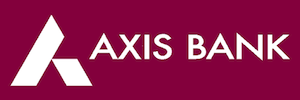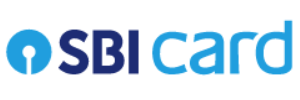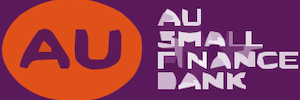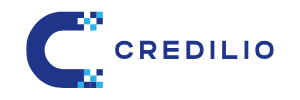Loans for blacklisted in India
Having a poor credit history can be challenging when seeking a loan. However, it is not the end of the road. In India, there are options available for individuals with bad credit. These loans are designed to provide financial assistance to those who need it the most, despite a less-than-perfect credit score. With some lenders, the focus is on the ability to repay rather than past mistakes. It’s crucial to assess your financial situation carefully and choose a loan option that best meets your needs without overextending yourself. Always remember, understanding the terms and conditions can greatly help in finding a suitable loan.
| Company | Loan amount | Term of Loan | Age Limit | Apply | |
|---|---|---|---|---|---|
 | up to ₹ 15.000 | 3 – 12 months | 21 – 65 | Apply for a loan | |
| NIRA is one of India's best Instant personal Loan apps providing loans from Rs 2500 – Rs 1 Lakh in partnership with leading banks and NBFCs.To apply for a personal loan with NIRA you would need your Aadhaar number, PAN number, Salary slip and 6months bank statements. | |||||
 | up to ₹ 50.000 | 3 – 60 months | 21 – 65 | Apply for a loan | |
| Navi is one of the largest lending apps in the country and the latest venture by Sachin Bansal (formerly co-founder of Flipkart, India’s largest e-commerce player) and Ankit Agarwal (formerly a banker with Deutsche Bank and Bank of America) that plans on making financial services simple, transparent and accessible to all. Navi provides its clients with cash loans, home loans and health insurace services. | |||||
 | up to ₹ 50.000 | 3 – 36 months | 21 – 55 | Apply for a loan | |
| Fibe (formerly EarlySalary) is one of India's leading digital lending apps focused on young, aspirational and tech-savvy Indian consumers. Instant Cash Loans, Personal Loans, Online Loan, Instant Personal Loans. | |||||
 | Credit Card | 21+ | Apply for a loan | ||
| IndusInd Bank Limited is a new-generation Indian bank headquartered in Pune. The bank offers commercial, transactional, and electronic banking products and services. IndusInd Bank was inaugurated in April 1994 by then Union Finance Minister Manmohan Singh. | |||||
 | Credit Card | Apply for a loan | |||
| Axis Bank Limited, formerly known as UTI Bank (1993–2007), is an Indian banking and financial services company headquartered in Mumbai, Maharashtra. It is India's third largest private sector bank by assets and Fourth largest by Market capitalisation. It sells financial services to large and mid-size companies, SMEs and retail businesses. | |||||
 | Credit Card | Apply for a loan | |||
| SBI Card was launched in October 1998 by the State Bank of India and GE Capital. Incorporated as SBI Cards and Payment Services Limited (previously known as SBI Cards and Payment Services Private Limited), SBI Card is headquartered in Gurgaon, Haryana. | |||||
 | Credit Card | Apply for a loan | |||
| Standard Chartered PLC is a British multinational banking and financial services company headquartered in London. It operates a network of more than 1,200 branches and outlets (including subsidiaries, associates and joint ventures) across more than 70 countries and employs around 87,000 people. It is a universal bank with operations in consumer, corporate and institutional banking, and treasury services. | |||||
 | Credit Card | Apply for a loan | |||
| HSBC is one of the world’s largest banking and financial services organisations. HSBC serves approximately 40 million customers through our global businesses: Wealth and Personal Banking, Commercial Banking, and Global Banking & Markets. Our network covers 63 countries and territories in Europe, Asia, the Middle East and Africa, North America and Latin America. | |||||
 | Credit Card | 25+ | Apply for a loan | ||
| AU is a dream that was started 25 years ago by Mr. Sanjay Agarwal, a merit holder Chartered Accountant and a first-generation entrepreneur. Founded in Jaipur in 1996 as Au Financiers, a non-deposit-taking Non-Banking Finance Company (NBFC), it effectively worked on funding economic growth, especially for the under-served and un-served low & middle-class individuals. | |||||
 | Credit Card | Apply for a loan | |||
| Credilio is an official distribution partner for the distribution of Personal Loan / Credit Line products of the following Banks and NBFCs. Credilio offers a life time free SMB credit card, powered by Visa. The card comes with various lucrative deals and offers on multiple online shopping and OTA platforms. | |||||
Payment Term: The minimum period is 3 months and the maximum 18 months. Interest rate: The rate varies between 7.9% and 18.9% per month (149% to 698% per annum). Example of a loan: ₹1,500.00, to be paid in 12 months and interest rate of 10.15% per month (219% per year). Total of 12 installments of ₹221.77. Total amount payable equal to ₹2,661.18. This is a service to find and compare loan and credits. The conditions depend on the financial company, product, amount and loan duration.
Understanding loan eligibility for blacklisted individuals
Securing a loan when you’re on a blacklist can feel daunting, yet not impossible. Banks and financial institutions are generally cautious. They associate blacklist status with poor credit history or defaulted payments. However, some lenders specialize in offering loans catered to individuals with such challenges. They assess other factors like income stability, employment status, and existing financial obligations.
“Even if you face credit challenges, options exist. Alternative lenders might offer flexible terms, but be mindful of higher interest rates.”
Determining eligibility typically involves a deeper analysis of your financial health. Lenders might consider non-traditional forms of credit assessment. For instance, paying utility bills on time or maintaining stable employment could play a crucial role. Highlighting these can enhance your credibility and improve your chances to obtain a loan, even if previous credit woes exist.
Different types of loans available
For individuals with a blacklisted status, finding the right loan can be challenging. However, there are various options to consider. It’s vital to choose wisely based on individual financial needs and repayment capabilities. Here is a brief overview of the common types of loans available:
- Personal loans: Often unsecured, best for flexible use like emergencies or consolidating debt.
- Secured loans: These require collateral like property or a vehicle, typically offering lower interest rates.
- Payday loans: Short-term loans meant to cover unexpected expenses, but usually with high-interest rates.
- Peer-to-peer loans: Borrow directly from individuals via online platforms, potentially offering competitive rates.
- Microfinance loans: Provided by microfinance institutions, catering primarily to low-income individuals without access to traditional banking.
It is crucial to understand each option’s terms, conditions, and potential risks before proceeding. Making an informed decision will help in managing finances effectively.
Step-by-step guide to apply for a loan
Applying for a loan, even if blacklisted, can seem daunting but it’s a process that can be broken down into manageable steps. Being informed and prepared significantly increases your chances of success. Here’s how you can apply for a loan in India:
- Evaluate Your Financial Situation: Before applying, it’s crucial to assess your financial health. Check your income, expenses, and identify how much you can realistically borrow.
- Research Lenders: Look for financial institutions that offer loans to individuals with a less than perfect credit history. It’s important to find lenders who have flexible approval criteria.
- Gather Required Documents: Typically, banks may ask for documents like identity proof, address proof, income statements, and your credit report. Having these ready in advance speeds up the process.
- Submit Loan Application: Carefully fill out the loan application with accurate information. Avoid errors as they could lead to application rejection.
- Follow-Up with Lender: After submission, stay in touch with the lender for any additional information they might need to process your loan.
Applying for a loan is a significant step, and understanding each phase ensures that you are better prepared, improving your chances for approval even if you are blacklisted.
Why financial institutions offer loans to high-risk individuals
High-risk individuals, often tagged as ‘blacklisted’, sometimes get a lifeline through loans despite their financial background. At first glance, it might seem reckless, even counter-intuitive. However, financial institutions are driven by the potential for huge returns from high-interest rates on these loans. This calculated risk is an avenue to boost profits while serving an underserved market. Lenders often see beyond the risks, tapping into a segment with fewer borrowing options who might accept steeper terms.
Moreover, granting loans to such individuals can be an act of financial inclusion, aiming to reintegrate them into the economic system. It’s a bold move that could transform lives, spur economic growth, and foster goodwill. Some argue this is exploitation, yet others view it as a necessary step towards economic equality, making credit access more democratic. Financial institutions, by extending these lifelines, play a part in the broader economic narrative, taking strides in balancing risk with opportunity.
Build Your Financial Standing Gradually
Improving creditworthiness after being blacklisted requires patience and smart habits. Begin by reviewing and correcting any discrepancies in your credit report. Consistent bill payments are crucial. Setting reminders helps ensure you meet deadlines. Meanwhile, avoid new loan applications often. This suggests reliability to potential lenders.
Consistency in payments today strengthens your financial future tomorrow.
Establish a monthly budget. Prioritizing essentials and managing spendings effectively can prevent future defaults. Moreover, using credit responsibly, like maintaining low credit card balances, can signal your commitment towards restoring your financial standing. Step by step, these actions show lenders your dedication to improve.
Comparing loan offers effectively
Choosing the right loan, especially when options feel limited, requires careful comparison. Start by looking at interest rates. Lower rates mean less to repay over time, which can be crucial when managing tight budgets. Next, consider the repayment terms. Flexible terms can offer breathing room, allowing you to adjust payments based on your current finances.
Fees are another important element to watch out for. Some loans might have hidden costs like processing fees or penalties for early repayment. Look for transparency in the loan offer to avoid unexpected surprises. Lastly, check the eligibility criteria. Ensuring that you meet the requirements can save time and reduce the risk of rejection.
| Aspect | Considerations |
|---|---|
| Interest Rates | Look for lower rates for overall savings |
| Repayment Terms | Choose flexible options for better management |
| Fees | Watch for hidden costs and penalties |
| Eligibility Criteria | Ensure you qualify to increase approval chances |
The risks of taking loans when blacklisted
Taking loans when blacklisted can be a tricky situation. Being blacklisted often means a history of unpaid debts or financial mismanagement, which might limit your access to conventional loans. However, there are still lenders who offer options specifically designed for such individuals. Yet, these options come with their own set of challenges. The most significant risk is the high interest rates that can make repayment difficult. It’s crucial to be aware that even a small delay in payment can lead to increased financial burden.
Another risk involves the potential for scams. Desperate situations can sometimes lead individuals to unverified or unreliable lenders. This can result in entering unfavorable agreements or even falling victim to fraud. Additionally, there is a risk of worsening your financial situation if you’re unable to pay even these alternative loans. It’s essential to carefully read and understand the terms of any loan agreement, ensuring it is feasible for your current financial status.
| Risk | Description |
|---|---|
| High Interest Rates | Higher than usual rates leading to increased financial strain. |
| Scams | Risk of unreliable lenders preying on vulnerable individuals. |
| Worsening Financial Condition | Potential to exacerbate existing financial issues if unable to repay. |
